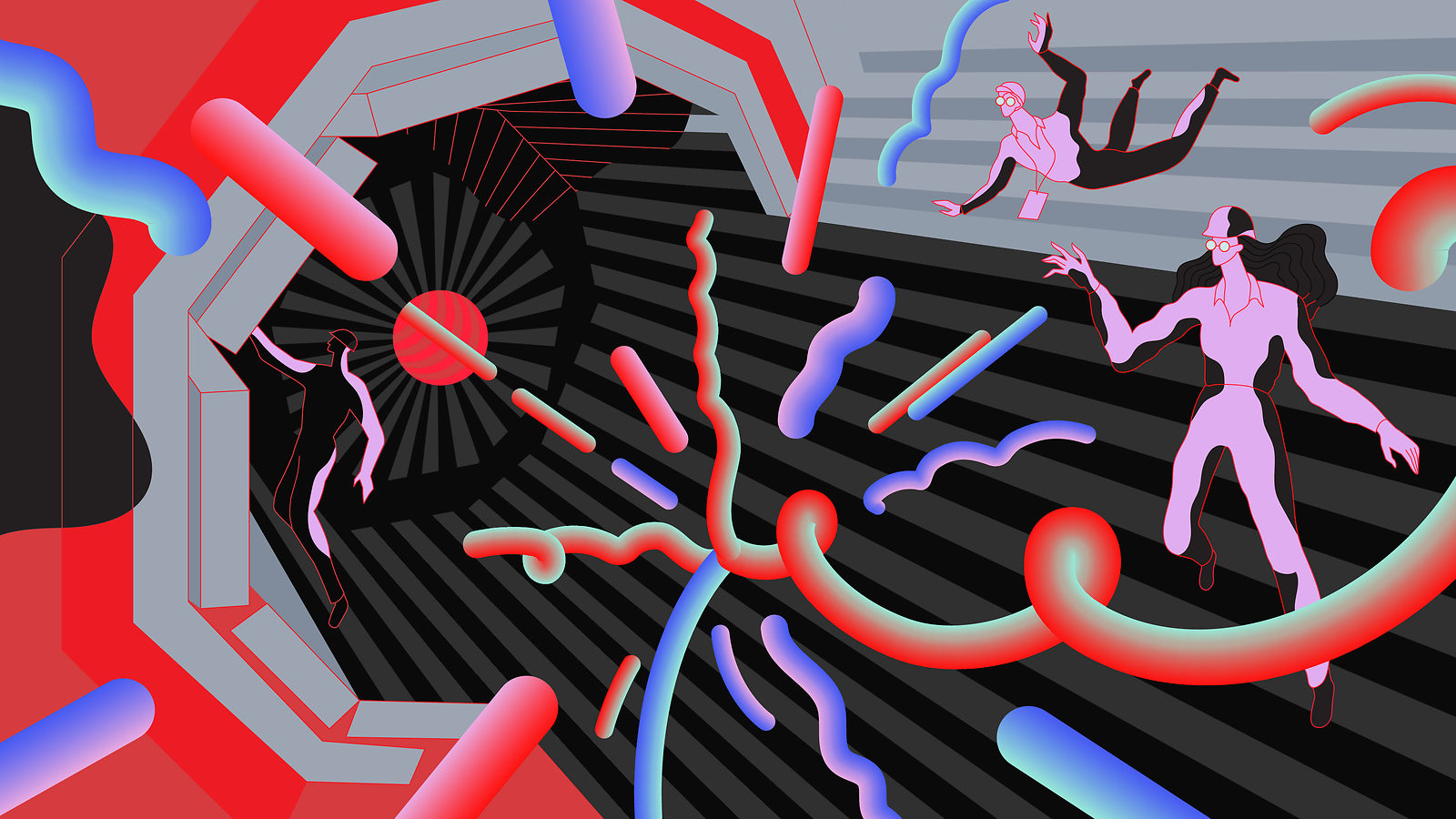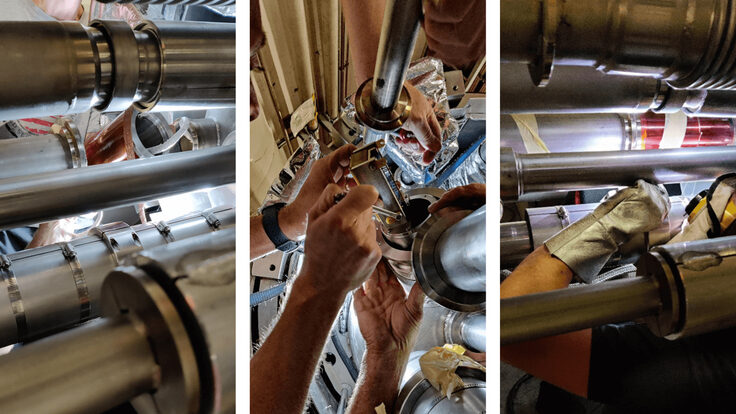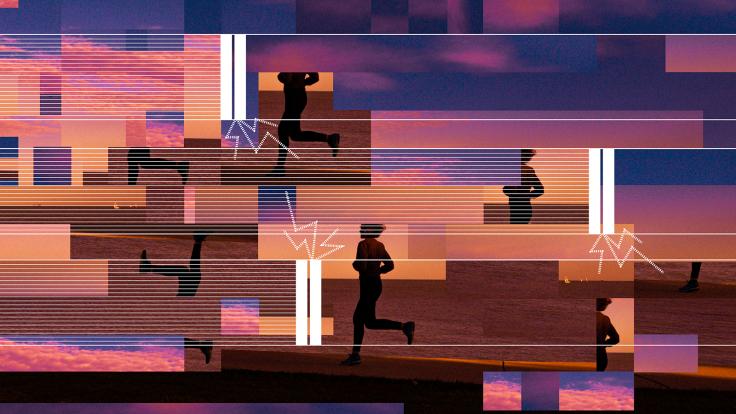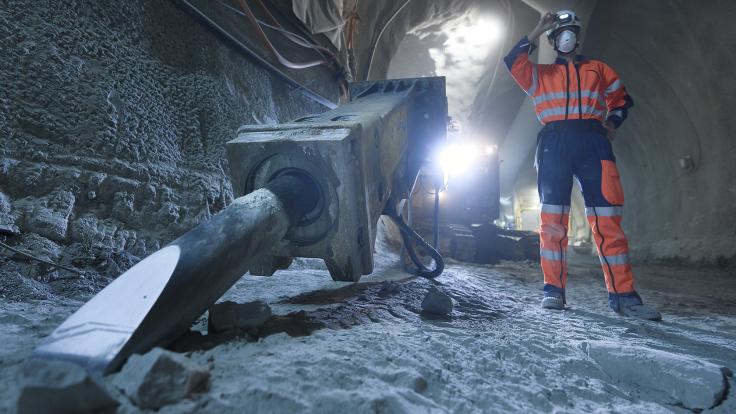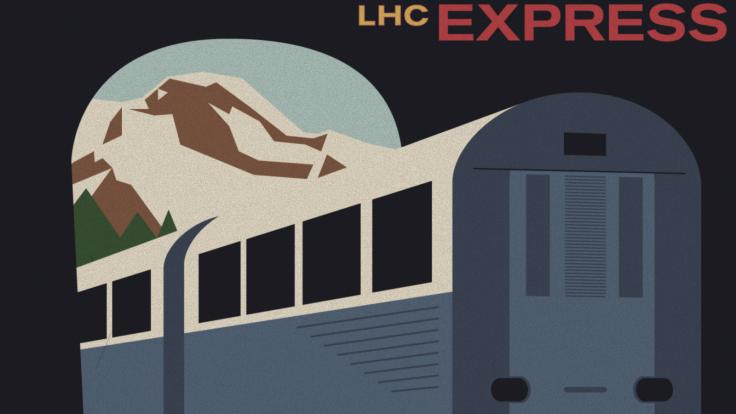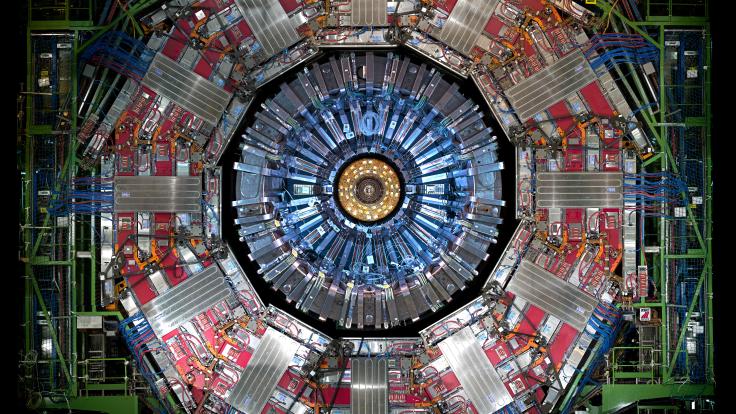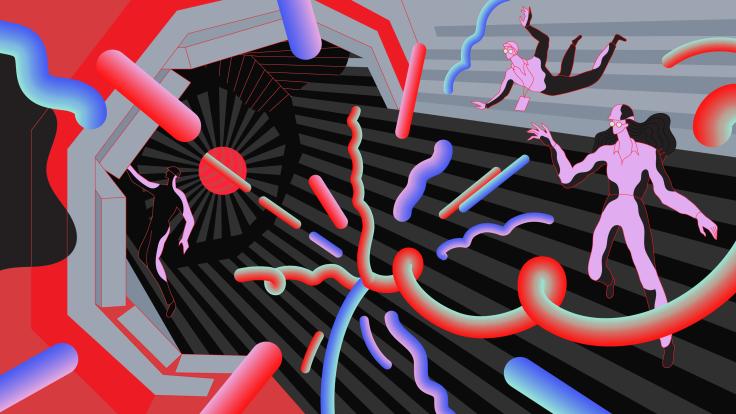In 2010, the Large Hadron Collider research program jumped into full swing as scientists started collecting physics data from particle collisions in the LHC for the first time.
How has this gigantic, global scientific effort affected the world? Symmetry pulled together a few numbers to find out.
278
petabytes of data
In the last decade, LHC experiments collected almost 280 petabytes of data, which scientists recorded on tape. You would need to stream Netflix 24/7 for more than 15,000 years to eventually use that much data! But from another perspective, platforms like Facebook (which has 2.5 billion users) collect that much data in 70 days!
~8 million
Higgs bosons
While it’s impossible to know the actual number of Higgs bosons the LHC has produced (see Accounting for the Higgs), scientists can use the Standard Model’s equations to predict how many Higgs bosons the LHC should have produced. Scientists consider all the different ways Higgs bosons can be made, the likelihood of each process, and the energy and total number of collisions. Studying those Higgs bosons, scientists have precisely defined the mass, charge, spin and half-life of the Higgs. They continue to examine the many different ways the Higgs interacts with other particles and use it as a tool to search for new physics beyond the Standard Model.
2,725
scientific papers
Every week the number of scientific papers that LHC scientists have published steadily increases as they comb through the data to study rare phenomena and search for new physics. This includes work by thousands of graduate students on their way to earning their PhDs.
7.5 billion
Worldwide LHC Computing Grid requests
Physicists need a huge amount of computing power to do their research—much more than a standard laptop can support. Every day several thousand physicists submit a total of about 2 million “jobs” to the WLCG. Each “job” is an important brick in the growing body of scientific work.
39.5 quadrillion
collisions
The number of collisions recorded by the four main experiments at the LHC is close to 40 quadrillion, or, as physicists say it, 395 “inverse femtobarns.” (Each inverse femtobarn corresponds to about 100 trillion collisions.) For reference, the LHC’s predecessor—the Tevatron particle collider at the US Department of Energy’s Fermi National Accelerator Laboratory—delivered a then-unprecedented more than 20 fb-1 to its two experiments over the course of 25 years of proton-antiproton collisions. Now the number of LHC collisions recorded by just the ATLAS or CMS experiment (~190 fb-1) is equivalent to the total number of ants on Earth.
15
new partners
CERN is governed by 23 member states, but scientists from more than 600 institutions around the world work on the experiments and projects it hosts. Since 2010, CERN has formally added 15 new countries—Albania, Bangladesh, Costa Rica, Kazakhstan, Latvia, Lebanon, Mongolia, Nepal, Palestine, Paraguay, the Philippines, Qatar, Sri Lanka, Thailand and Tunisia—to its research community through official bilateral cooperation agreements. In addition, Israel, Romania and Serbia upgraded their partnerships with CERN to full membership and joined CERN’s governing body. Today, the total number of collaborating countries is around 80. US institutions are supported by the Department of Energy’s Office of Science.
1
microgram of protons
When running, the LHC has more than 300 trillion protons circling through its two beampipes. But they’re so tiny that even if you combined all the protons accelerated in the machine since 2010, they would only amount to a pile about the size of a speck of pollen.
>1 million
visitors
CERN has hosted more than 45,000 guided tours in 32 languages through its public visit program, allowing more than 1 million visitors to discover the work of the world’s biggest physics laboratory. And for two special Open Day weekends—one in 2013 and another in 2019—CERN welcomed an average of 36,000 visitors a day! That’s roughly the same daily average as Disneyland Paris. Open Day visitors had access to numerous sites such as the LHC tunnel that are normally only accessible to authorized personnel.
250
artists
Each year the Arts at CERN program invites artists to work alongside particle physicists and engineers at CERN. The resulting installations, choreography and multimedia projects travel the world and inspire countless art and science enthusiasts. In 2019, for example, more than 80,000 visitors took in the traveling exhibit Quantum/Broken Symmetries, which featured pieces by 10 artists who did work at CERN.
130
public events
The Globe of Science and Innovation at CERN isn’t just an iconic landmark; it’s also a venue for conferences, shows, panels, film screenings and artistic performances. Since 2010, about 40,000 visitors have attended an event hosted by CERN inside the Globe. CERN also organizes events in the local community, including talks at schools, science fairs and panel discussions at movie theaters.
>50
computing collaborations
Since 2010, CERN openlab has set up over 50 collaborative projects through which CERN computer scientists work with leading tech companies on joint R&D. The companies get to test their latest products in CERN’s cutting-edge research environment, and CERN gets the chance to try out emerging technologies. For example, current projects with companies Intel and Micron are exploring how machine learning can be used to further improve the processing of data from particle collisions. At the same time, projects with Oracle and Siemens are using such technologies to help improve control systems for the LHC.
>300
knowledge transfer projects
CERN’s Knowledge Transfer department collaborates with academic and industrial organizations to find new uses outside of particle physics research for technology developed at CERN. Since 2010, CERN has signed more than 300 knowledge transfer contracts with universities and companies working in fields such as safety, medtech and aerospace engineering. A notable collaboration is a father-and-son medical team who used CERN Medipix read-out chips to develop the world’s first 3D color X-ray in 2018.
10,329
educators
CERN’s national and international teacher programs welcome groups of educators to the lab for anywhere between three days and two weeks. During their stays, teachers visit experiments, talk with physicists, and discuss ways to bring modern physics into their classrooms. More than 10,000 educators have participated.
2,947
summer students
Since 2010 almost 3,000 undergraduates have participated in the CERN summer student programs, including more than 150 students from the United States. These students receive training, tutoring and mentorship as they dip their toes into real scientific research and learn what particle physics is all about.
~10 million
cups of coffee
The restaurants at CERN go through about 30 kilograms of coffee a day. Considering every kilogram of coffee generally makes between 120 and 140 cups, that’s roughly 4,000 cups a day!



